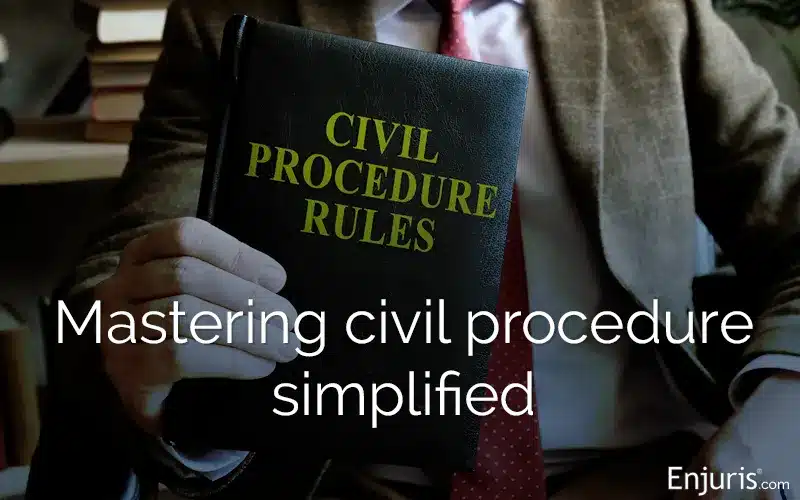
For those who have been injured in an accident and are considering or currently navigating the legal system, understanding the rules of civil procedure is critical, especially if you're representing yourself pro se. Pro se litigants, who handle their legal representation without an attorney, must have a clear grasp of these rules to effectively manage their case and avoid the risk of dismissal.
In this blog post, we aim to demystify the rules of civil procedure for you, offering a comprehensive overview of both federal and state-level procedures.
Federal vs. state rules of civil procedure
The Federal Rules of Civil Procedure (FRCP) is a set of rules adopted by the Supreme Court of the United States, governing civil procedures in U.S. federal courts. These rules are designed to ensure fairness and efficiency in the justice process.
The FRCP can be accessed online through various sources, including the official United States Courts website and legal databases such as LexisNexis and Westlaw.
While the FRCP applies to federal courts, each state has its own set of rules for civil procedures in state courts. The state rules can vary significantly from one state to another, though many are modeled after the FRCP.
State rules of civil procedure are typically available on the respective state court’s official website or through state-specific legal resources.
It’s important to note that many state courts also have local rules of civil procedure. These local rules address specific procedural requirements and nuances relevant to particular jurisdictions within a state. They might cover various topics, from specific filing procedures to unique court protocols. Local rules are often found on the websites of individual county or district courts within the state.
What do the federal and state rules of civil procedure cover?
The rules of civil procedure are essential guidelines that govern legal proceedings. They cover a variety of critical aspects to ensure lawsuits are conducted smoothly and fairly. Let's explore some of the key areas these rules address:
- Filing a lawsuit: The rules of civil procedure clearly define the process of initiating a lawsuit. For example, according to FRCP Rule 3, a civil action begins when a plaintiff files a complaint with the court. This complaint must include essential information such as the names of all parties involved, a clear statement of the facts constituting the claim, and importantly, the legal basis for the court’s jurisdiction.
- Format and timing for court documents: The rules set strict guidelines on the format of documents filed with the court, including font size, margins, and page limits, ensuring uniformity and readability. They also dictate timelines for filing various documents. For example, under FRCP Rule 12, a defendant must respond to a complaint within 21 days after being served.
- Discovery procedures: Discovery is the process through which parties gather evidence from each other. The rules govern the methods of discovery, including interrogatories (written questions), depositions (oral questioning), and requests for production of documents. They also cover the scope of discovery, emphasizing the need for information to be relevant and non-privileged.
- Pretrial motions: These rules detail how parties can use motions to request the court to make certain decisions before the trial. This includes motions to dismiss the case, motions for summary judgment (where a party argues that there are no factual disputes and they are entitled to judgment as a matter of law), and motions to compel discovery.
- Conduct of trials: The rules on trial conduct cover everything from jury selection to the presentation of evidence and arguments. They establish the order in which parties present their cases and the standards for admitting evidence.
Grasping the rules of civil procedure is crucial for anyone involved in a personal injury lawsuit, particularly for pro se litigants representing themselves. A lack of understanding can lead to significant consequences, ranging from procedural delays to the more severe risk of having a case dismissed.
A look at the rules of evidence
In addition to the rules of civil procedure, litigants must be aware of other pertinent rules that play a crucial role in legal proceedings. For example, the rules of evidence govern what information can be presented in court, helping to ensure that only relevant, reliable, and legally obtained evidence is considered during a trial.
These rules determine how evidence is to be collected, presented, and challenged. They include guidelines on the admissibility of various types of evidence, such as oral testimony, documents, and physical objects, and they set standards for what constitutes permissible proof and the methods for challenging evidence that one party believes should not be admitted.
Like the rules of civil procedure, the rules of evidence vary between federal and state courts, so it is important for litigants to familiarize themselves with the specific rules applicable to the court in which their case is being heard.
